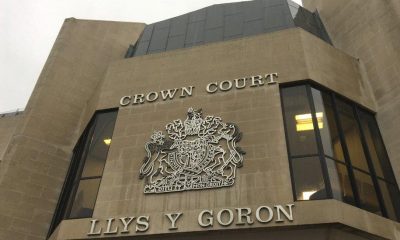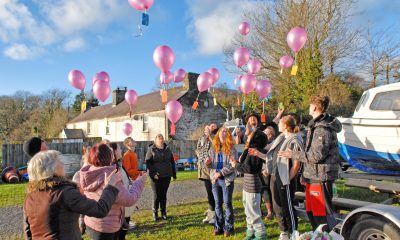News
BBC Wales investigation uncovers potential new evidence in Clydach Murders case

A BBC WALES investigation has uncovered potential new evidence casting doubt over the guilt of a man for the horrific murders of three generations of one family 21-years-ago.
In a powerful one-hour documentary made by the BBC Wales Investigates team, later tonight on BBC One Wales at 9pm and then on BBC iPlayer, reporter Wyre Davies explores whether the conviction of David Morris for one of Wales’ most shocking crimes could be a miscarriage of justice.
Mandy Power, her elderly mother and two young daughters were brutally bludgeoned to death with a metal pole coated in fibre glass at their home in Kelvin Road, Clydach, near Swansea in the summer of 1999. It led to South Wales Police’s largest ever murder inquiry.
Seven years after the murders, local labourer Morris was sentenced to four life prison terms at Newport Crown Court in 2006, later to be reduced to 32 years, after being found guilty of the mass murders.
A year earlier his conviction from a previous trial at Swansea Crown Court in 2002 had been quashed in the Court of Appeal but he was soon to be convicted again.
The brutal murders had sent shockwaves through the close-knit Welsh community in the summer of 1999 and it soon emerged 34-year-old Mandy Power had been involved in a serious love affair with former police officer Alison Lewis at the time she was killed.
Alison Lewis was married and living with her husband – South Wales Police Sergeant Stephen Lewis – when the murders occurred sometime between June 26th and the early hours of June 27th in 1999.
In a twist to the tragic events, Stephen’s twin brother Stuart, an acting inspector with the force at the time, was the most senior officer to arrive at the crime scene that morning.
All three of the Lewis’s quickly became suspects in connection with the murders and just over a year later – in July 2000 – Alison and Stephen Lewis were arrested on suspicion of murder and Stuart Lewis was arrested on the suspicion of perverting the course of justice.
They were questioned but weren’t charged as the Crown Prosecution Service said there was insufficient evidence. All three maintained they were innocent of any involvement.
The focus of the police investigation then sharply turned to Morris after police linked him to a gold chain left at the murder scene, which he admitted was his just weeks before his first trial. He was arrested in March 2001, questioned and charged with the horrific killings in the same month.
However, a new eyewitness account from the night questions whether South Wales Police missed investigating potentially important information during their original inquiries.
Tonight’s programme will hear from a taxi driver, Mike, who claims to have seen twin brothers Stephen and Stuart Lewis walking along Vardre Road minutes away from the crime scene in Kelvin Road after 2am.
“There were two blokes walking towards me on the pavement next to the taxi my side,” Mike said.
“And what struck me was they were very, very similar. Both dark hair, cropped. Very, very similar features.”
Mike says that after seeing their photos in local press coverage he was “100% convinced” the two men he saw were the Lewis brothers. He was working as a taxi driver for a local firm on the night of the murders. He said he contacted police twice about the sightings but says his calls and information he gave to police were never followed up.
Stephen Lewis issued a statement, saying any witnesses who suggest he was in Clydach on the night were mistaken as he was at home all night.
Stuart Lewis has said he did not see either Alison or his twin Stephen that night and was on general patrol when the killings took place; while Alison has said she was at home in bed with her husband, Stephen.
BBC Wales now understands Mike has given his statement to the police, who are investigating.
Wyre Davies also talks to another potential eyewitness in the programme.
John Allen claims to have seen a man carrying a green coloured “kit bag” under his arm near to the crime scene as he drove as a disqualified driver in country lanes in the early hours of the morning with three others.
He says he regrets not informing police at the time but has come forward now.
“I seen him perfectly. Standing there in the middle of the road. When I come round the corner I had to slam on or I would have hit him cause he was practically on my bonnet,” Mr Allen said.
Mr Allen did not report what he saw to the police at the time, and admits that he was driving while disqualified, but says he has now come forward as it’s “been on his mind” for 20 years, and he wants justice.
Another witness who actually gave evidence at David Morris’ trials, also claims to have seen a man carrying a bundle that night near to Kelvin Road.
Nicola Williams reported what she saw to police, provided an e-fit and later identified the man as Stephen Lewis at a video ID parade. At trial her evidence was disputed and it seems it didn’t cause the jury to doubt David Morris’ guilt.
Morris’ legal team believe the potential new sightings could be significant and their testimonials should be investigated by police and the Criminal Cases Review Commission.
Solicitor Maslen Merchant said: “It’s very, very interesting the accounts that they’ve given.
“It’s interesting that they describe events and seeing the same individual – or possibly one of two individuals – around that area at exactly the right time.
“Potentially, new witnesses could provide Dai with a ground of appeal; new “witnesses could get these convictions quashed.
Morris, who has spent more than 19 years in prison for the crime, has always protested his innocence.
His DNA and fingerprints were never discovered at the crime scene in Kelvin Road where he was said to have started four fires to destroy the house after brutally beating his victims to death.
The most incriminating evidence against Morris was the gold chain found at the crime scene which he lied was his until weeks before his first trial.
Winchester University lecturer Brian Thornton has been investigating the murders for more than 10 years from the Crime and Research Centre he set up at the university. He gave BBC Wales access to the original court files housed in a bunker at the university containing thousands of documents and exhibits from the case to investigate.
Professor Thornton said the potential new evidence could prove significant and hopefully provide a breakthrough in terms of getting the case reviewed and back to the Court of Appeal. They plan to include the potential new evidence in a fresh application to the Criminal Cases Review Commission (CCRC).
“The threshold that you have to pass is you have to establish that there is fresh evidence, new evidence, essentially evidence that the jury never heard.
“And this new evidence is going to be right at the heart of the fresh application,” Brian Thornton said.
Morris’ defence team also believe the key to potentially proving his innocence could still lie in the forensics, despite their client’s DNA never being discovered at the scene.
Forensic scientist Joanne Millington has been looking at the case again with fresh eyes.
In the programme she argues there were shortcomings in the original DNA testing of the murder weapon as well as a blood-soaked sock thought to be used as a glove by the killer and both found at the crime scene. Her findings will be included in the new application to be submitted to the CCRC.
Ms Millington says it is already known that an unidentified partial male DNA trace was detected on the murder weapon that isn’t a match to an elimination sample provided by Morris.
“We have an elimination sample from him to compare directly and it doesn’t match his profile,” she said.
Wyre Davies also traces the steps of Morris on the night of the murders and examines the potential sequence of who was killed at the victims’ home in Kelvin Road.
Also appearing in the programme is barrister Simon McKay who has expertise in disclosure and high-profile cases around terrorism and security.
After looking again at disclosure details in both of Morris’s trials, he raises concerns that too many documents were withheld from the defence under the legal umbrella of Public Interest Immunity (PII). The type of documents normally held back as PII are usually only those seen as important for protecting government and public security as well as covert police intelligence.
Mr McKay said: “This case certainly has a significant volume of material which was subject to a series of public interest immunity applications and there is not an obvious reason why you would expect that to arise.
“When one looks at the entire context of the case … then it’s understandable that one walks away from this case with serious concerns that justice has been done.”
The 21-year-old murder case has been back in the spotlight following a campaign set up by Morris’s family.
An online Facebook page aimed at freeing him now has more than 22,000 members. Before lockdown, meetings were held regularly in Swansea to rally support.
Supporters who believe there has been a miscarriage of justice wear or decorate their cars or house with yellow or green garlands and bows.
Morris’ sister Debra Thomas has always protested her brother’s innocence and says she hopes the programme will convince other potential witnesses to come forward with information.
Two attempts to convince the review body to take a fresh look at the case have so far failed, the latest in 2018.
South Wales Police says it undertook an extensive investigation; Morris has twice been convicted by a jury and they await the content of the programme with interest.
The victims’ families – the Dawson and Power families – both issued statements earlier this week, saying they believe the right man was behind bars for the killings.
The Clydach Murders: Beyond Reasonable Doubt airs on BBC One Wales tonight (Thursday) at 9pm; and will be available on BBC iPlayer.
Health
Resident doctors in Wales vote to accept new contract

RESIDENT doctors across Wales have voted to accept a new contract, with 83% of those who took part in a referendum backing the agreement, according to BMA Cymru Wales.
The contract includes a four per cent additional investment in the resident doctor workforce and introduces a range of reforms aimed at improving training conditions, wellbeing and long-term workforce sustainability within NHS Wales. The BMA says the deal also supports progress towards pay restoration, which remains a central issue for doctors.
Key changes include new safeguards to limit the most fatiguing working patterns, measures intended to address medical unemployment and career progression concerns, and reforms to study budgets and study leave to improve access to training opportunities.
Negotiations between the BMA’s Welsh Resident Doctors Committee, NHS Wales Employers and the Welsh Government concluded earlier this year. Following a consultation period, a referendum of resident doctors and final-year medical students in Wales was held, resulting in a clear majority in favour of the proposals.
Welsh Resident Doctors Committee chair Dr Oba Babs Osibodu said the agreement marked a significant step forward for doctors working in Wales.
He said: “We’re proud to have negotiated this contract, which offers our colleagues and the future generation of doctors safer terms of service, fairer pay, and better prospects so that they can grow and develop their careers in Wales.
“This contract will help to retain the doctors already in training, and also attract more doctors to work in Wales, where they can offer their expertise and benefit patients.”
Dr Osibodu added that the BMA remains committed to achieving full pay restoration and acknowledged that challenges remain for some doctors.
“Whilst this contract sets the foundations for a brighter future for resident doctors in Wales, we recognise that there are still doctors who are struggling to develop their careers and secure permanent work,” he said. “We need to work with the Welsh Government and NHS employers to address training bottlenecks and underemployment.”
The Welsh Government has previously said it recognises the pressures facing resident doctors and the importance of improving recruitment and retention across NHS Wales, while also highlighting the need to balance pay agreements with wider NHS funding pressures and patient demand.
The new contract is expected to be phased in from August 2026. It will initially apply to doctors in foundation programmes, those in specialty training with unbanded rotas, and new starters, before being rolled out to all resident doctors across Wales.
Crime
Swansea man jailed for online child sex offence dies in prison
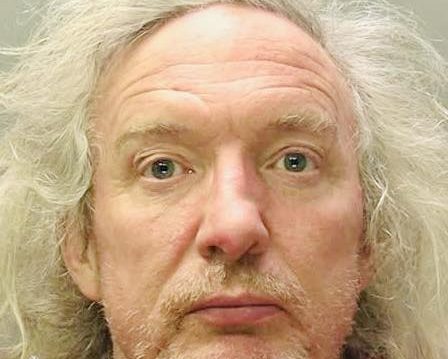
A SWANSEA man who was jailed earlier this year for attempting to engage in sexual communication with a child has died while in custody.
Gareth Davies, aged 59, of the Maritime Quarter, was serving an 18-month prison sentence after being convicted in May of sending sexually explicit messages to what he believed was a 14-year-old girl. The account was in fact a decoy used as part of an online safeguarding operation.
The court heard that Davies began communicating with the decoy between November and December 2024 and persistently pursued the individual, later attempting to arrange a face-to-face meeting. He was arrested after being confronted by the decoy operators.
Davies had pleaded not guilty but was convicted following a trial. At the time of sentencing, police described the messages as extremely concerning and said his imprisonment was necessary to protect children.
It has now been confirmed that Davies died at HMP Parc on Wednesday (Nov 27) while serving his sentence.
The Prisons and Probation Ombudsman has launched an independent investigation into the death, which is standard procedure in all cases where someone dies in custody. No cause of death has been released at this stage.
A coroner will determine the circumstances in due course.
Farming
Welsh Conservatives warn climate plans could mean fewer livestock on Welsh farms

THE WELSH CONSERVATIVES have challenged the Welsh Government over climate change policies they say could lead to reductions in livestock numbers across Wales, raising concerns about the future of Welsh farming.
The row follows the Welsh Government’s decision, alongside Plaid Cymru and the Welsh Liberal Democrats, to support the UK Climate Change Committee’s Fourth Carbon Budget, which sets out the pathway towards Net Zero greenhouse gas emissions by 2050.
The Carbon Budget, produced by the independent Climate Change Committee (CCC), states that meeting Net Zero targets will require a reduction in agricultural emissions, including changes to land use and, in some scenarios, a reduction in livestock numbers.
During questioning in the Senedd, the Welsh Conservatives pressed the Deputy First Minister and Cabinet Secretary for Climate Change and Rural Affairs on whether the Welsh Government supports reducing livestock numbers as part of its climate strategy.
Speaking after the exchange, Welsh Conservative Shadow Cabinet Secretary for Rural Affairs, Samuel Kurtz MS, said the Welsh Government could not distance itself from the implications of the policy it had backed.
Mr Kurtz said: “By voting in favour of these climate change regulations, Labour, Plaid Cymru and the Liberal Democrats have signed up to the UK Climate Change Committee’s call to cut livestock numbers in Wales, and they cannot dodge that reality.
“The Deputy First Minister’s smoke-and-mirrors answers only confirm what farmers already fear: that Labour, along with their budget bedfellows in Plaid and the Lib Dems, are prepared to sacrifice Welsh agriculture in pursuit of climate targets.”
He added that the issue came at a time of growing pressure on the farming sector, pointing to uncertainty over the proposed Sustainable Farming Scheme, the ongoing failure to eradicate bovine TB, nitrogen pollution regulations under the Nitrate Vulnerable Zones (NVZs), and proposed changes to inheritance tax rules affecting family farms.
The Welsh Government has repeatedly said it does not have a target to forcibly reduce livestock numbers and has argued that future emissions reductions will come through a combination of improved farming practices, environmental land management, and changes in land use agreed with farmers.
Ministers have also said the Sustainable Farming Scheme, which is due to replace the Basic Payment Scheme, is intended to reward farmers for food production alongside environmental outcomes, rather than remove land from agriculture.
The UK Climate Change Committee, which advises governments across the UK, has stressed that its pathways are based on modelling rather than fixed quotas, and that devolved governments have flexibility in how targets are met.
However, farming unions and rural groups in Wales have warned that policies focused on emissions reduction risk undermining the viability of livestock farming, particularly in upland and marginal areas where alternatives to grazing are limited.
The debate highlights the growing tension between climate targets and food production in Wales, with livestock farming remaining a central part of the rural economy and Welsh cultural identity.
As discussions continue over the final shape of the Sustainable Farming Scheme and Wales’ long-term climate plans, pressure is mounting on the Welsh Government to reassure farmers that climate policy will not come at the expense of the sector’s survival.
-

 Crime1 day ago
Crime1 day agoMilford Haven man jailed after drunken attack on partner and police officers
-
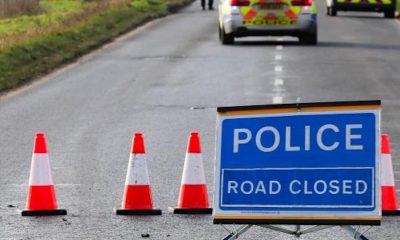
 News4 days ago
News4 days agoDyfed-Powys Police launch major investigation after triple fatal crash
-

 Crime1 day ago
Crime1 day agoTeenager charged following rape allegation at Saundersfoot nightclub
-

 Crime2 days ago
Crime2 days agoMan charged with months of coercive control and assaults
-

 Crime3 days ago
Crime3 days agoMan sent to Crown Court over historic indecent assault allegations
-

 Crime5 days ago
Crime5 days agoMan spared jail after baseball bat incident in Milford Haven
-
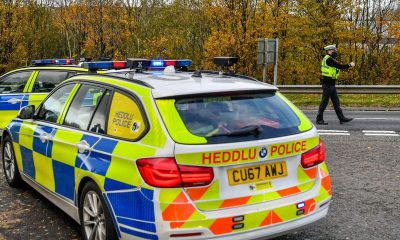
 Crime3 days ago
Crime3 days agoMilford Haven man admits multiple offences after A477 incident
-

 Crime2 days ago
Crime2 days agoWoman ‘terrified in own home’ after ex breaches court order









